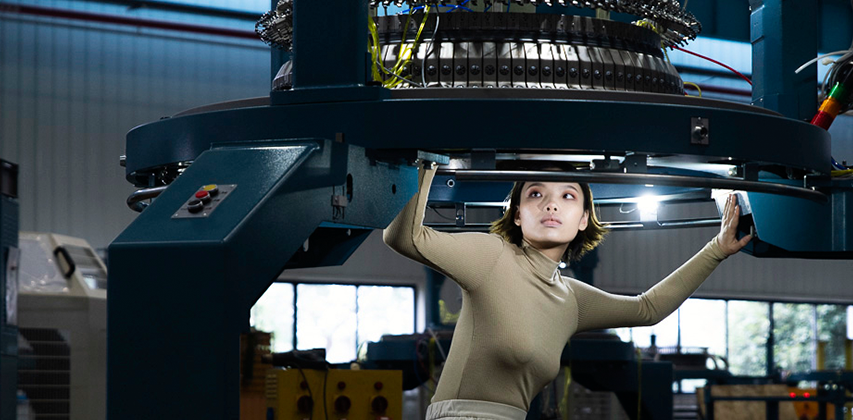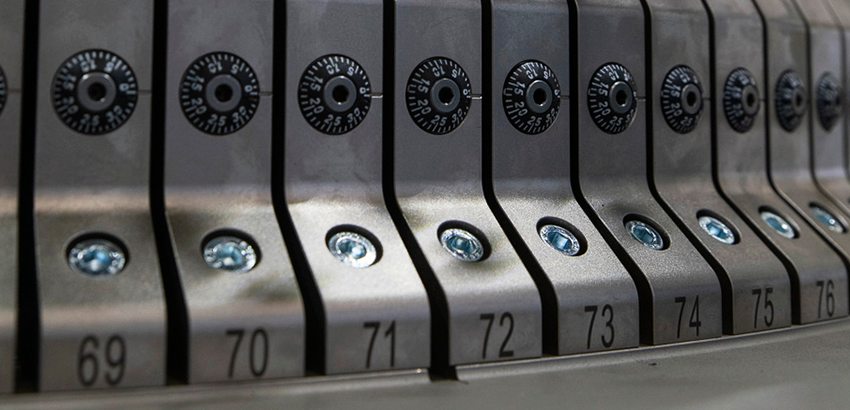Machine Technology in Detail
Details and applications of seamless technology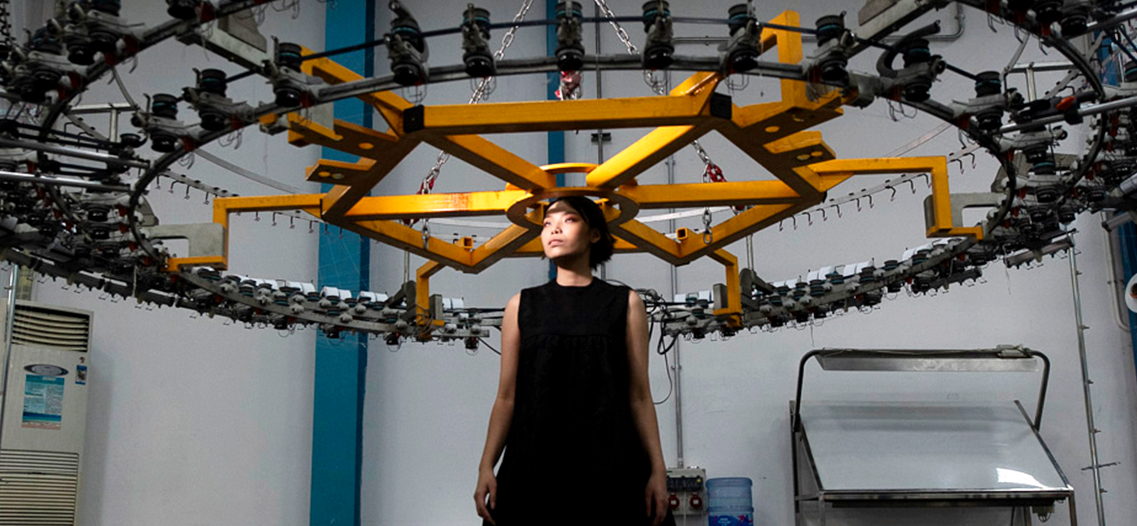
Machine Technology in Detail
In this showcase we will cover the basic information related to knitting technology, it’s applications and characteristics. We will also cover the benefits that iPolaris software has to offer to help you set your designs in the right way. You’ll be able to expand your technical knowledge and communicate better with the knitting engineer and your team.
Keep in mind that this showcase relates to the earlier module ‘knitting tech and applications’, if you haven’t read we highly advice you to. You can check it out here.
At the end of this showcase you have learnt:
- What is a wale and a course?
- How can stitch density be applied in your design?
- What do we mean with technical face and technical back?
- Understanding in more detail the knitting machinery to easier apply and find the right settings in iPolaris.
Without further delay, let’s begin!

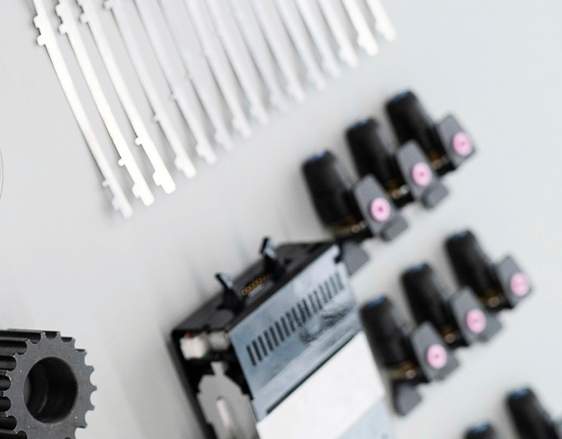
A Wale
A wale is a predominantly vertical column of intermeshed needle loops generally produced by the same needle knitting at successive (not necessarily all) knitting cycles. A wale commences as soon as an empty needle starts to knit.
- When loop transfer occurs it is possible to transfer a wale of loops from one needle A to another B and to recommence knitting with the second needle, in which case more than one needle will have produced intermeshed loops in the same wale. (If needle B knits continuously, the wale knitted by needle A will merge into it).
- In warp knitting a whale can be produced from the same yarn if the same warp guide laps the same needle at successive knitting cycles.
- Wales are connected together across the width of the fabric by sinker loops (weft knitting) or underlaps (warp knitting).
- Wales are most clearly shown on the technical face and courses on the technical back of single needle bed fabric.
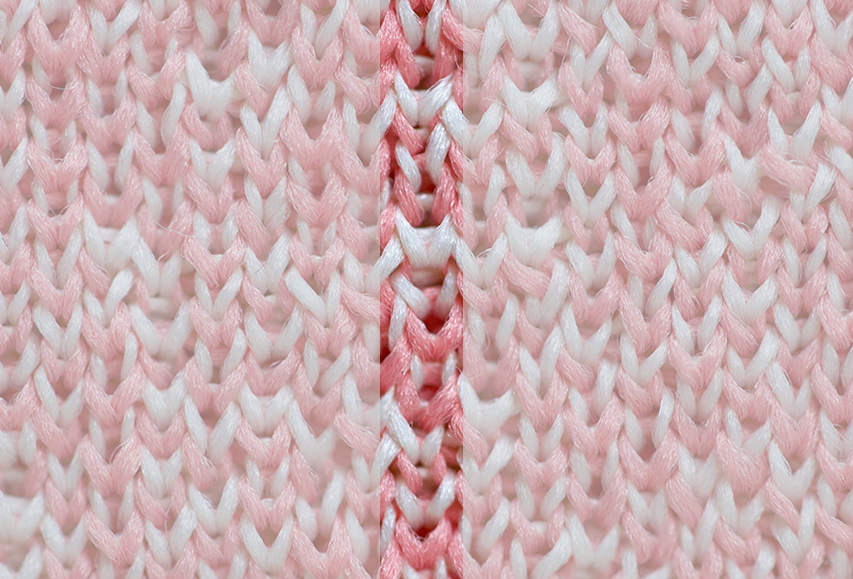
A Course
A course is a predominantly horizontal row of needle loops (in an upright fabric as knitted) produced by adjacent needles during the same knitting cycle.
A Course Length
In weft knitted fabrics (with the exception of structures such as jacquard, intarsia and warp insertion), a course of loops is composed of a single length of yarn termed a course length. Weft knitted structures will unrove from the course knitted last unless it is secured, for example, by binding-off.
A Pattern Row
A pattern row is a horizontal row of needle loops produced by adjacent needles in one needle bed. In plain weft knitted fabric this is identical to a course but in more complex fabrics a pattern row may be composed of two or more course lengths. In warp knitting, every loop in a course is usually composed of a separate yarn.
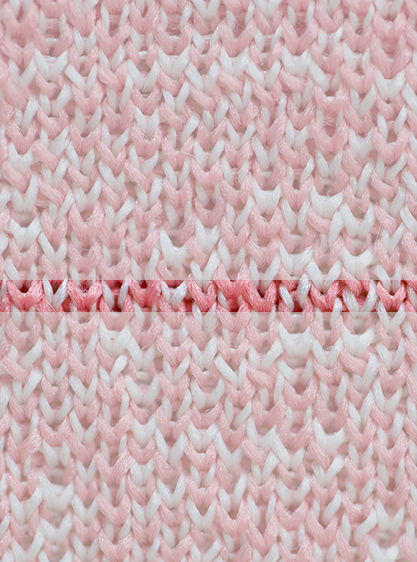
Stitch Density
Stitch density refers to the total number of loops in a measured area of fabric and not to the length of yarn in a loop (stitch length). It is the total number of needle loops in a given area (such as a square inch, or three square centimeters). The figure is obtained by counting the number of courses or pattern rows in one inch (or three centimeters) and the number of wales in one inch (or three centimeters), then multiplying the number of courses by the number of wales
Different stitch densities allows you to work with different loop lengths, offering a variety of textures, controlling how loose or tight a fabric can be.
Specialized knitting software iPolaris allows you to easily calculate the stitch density of your developments thru its BODYKNIT feature, a plan dedicated to overlapping, with easy insertion (in %) on the design itself, of different mesh density zones. For more information about this software please read more about iPolaris here.
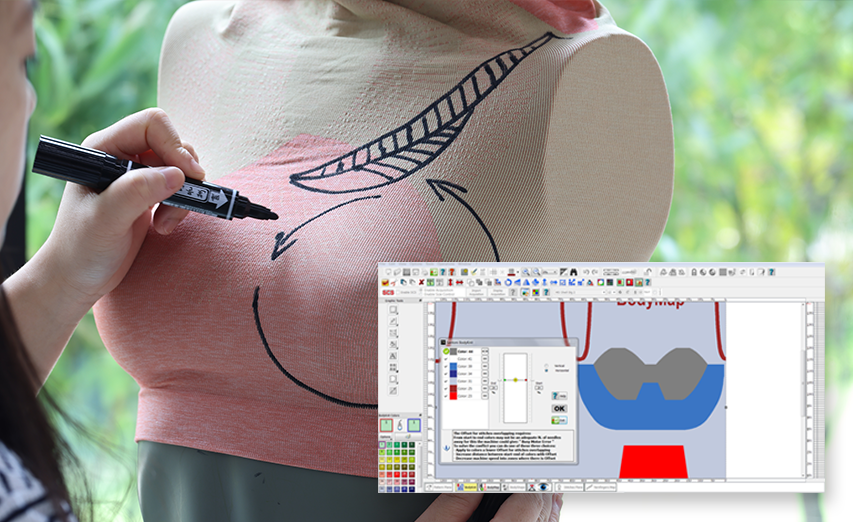
Technical Front and Technical Back
Single face structures are produced in warp and weft knitting by the needles (arranged in either a straight line or a circle, with their hooks facing outwards) operating as a single set. Adjacent needles will thus have their hooks facing towards the same direction and the heads of the needles will always draw the new loops downwards through the old loops in the same direction.
Technical Front
The technical front of a fabric tends to show the face stitches in the form of the side limbs of the loops or overlaps as a series of interfitting V‘s. The face loop-side is the underside of the stitch on the needle.

Technical back
The technical back is the opposite side of the stitch to the face loop-side and shows reverse stitches in the form of sinker loops or underlaps, as well as the heads of the loops.

Double Face Structures
Double face structures are produced in weft and warp knitting when two sets of independently-controlled needles are employed with the hooks of one set knitting or facing in the opposite direction to the other set. The two sets of needles thus draw their loops from the same yarn in opposite directions, so that the fabric, formed in the gap between the two sets, shows the face loops of one set on one side and the face loops of the other set on the opposite side.
The two faces of the fabric are held together by the sinker loops or underlaps, which are inside the fabric so that the reverse stitches tend to be hidden. The two faces may be knitted from different yarns and the two fabrics thus formed may only occasionally be joined together. Sometimes the two faces are cohesively produced and are far enough apart for the connecting sinker loops or underlaps to be severed in order to produce two single face fabrics.
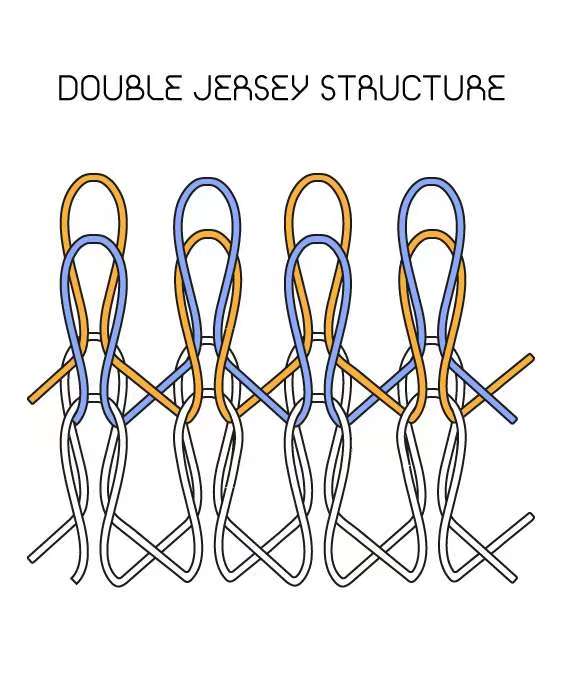

Needle
There are three different kinds of needles can be used on knitting machine:
- Compound needle
- Latch needle
- Bearded needle (spring needle)
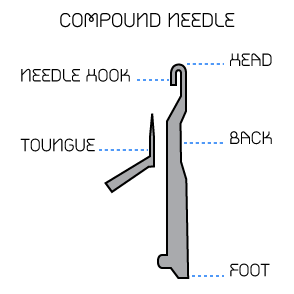
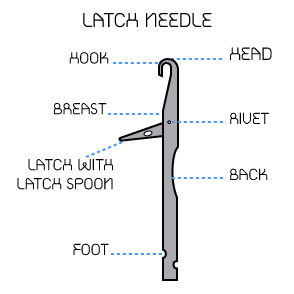
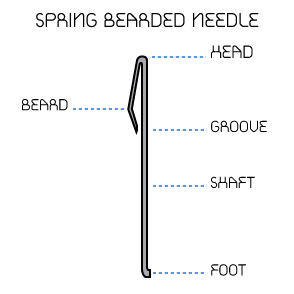
In circular technology we mostly use the latch needle and it’s movements.
The knitting process of a course of plain fabric is made of different synchronized actions.
Let’s start with the basic set up of the machinery: the basic rotation of the seamless machinery is counter clockwise. In total the machine has eight feeds. Meaning every revolution gives eight courses.
At the end of each feed the knit formation takes place.
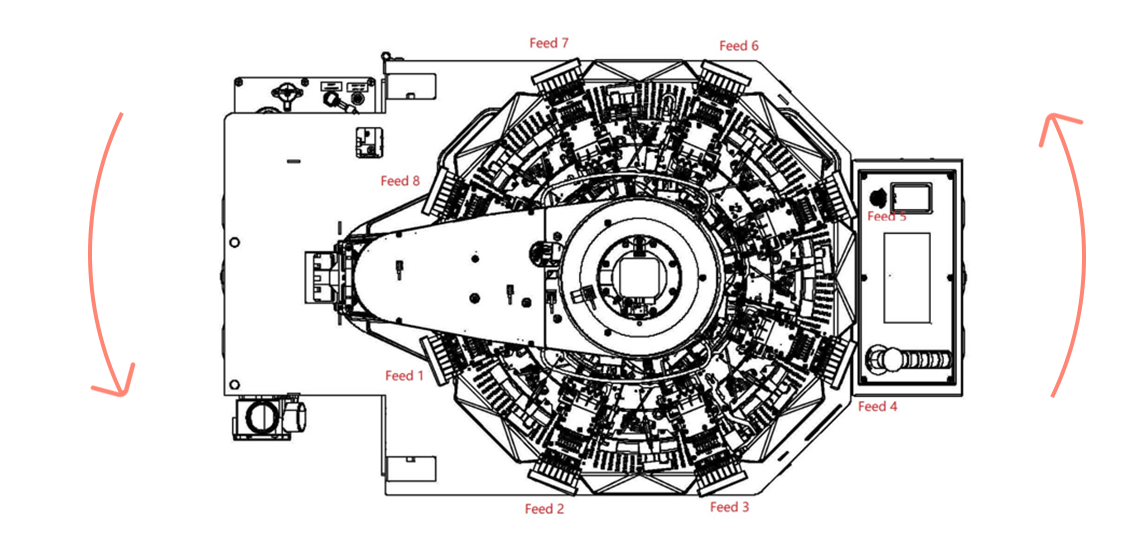
Knitting Action
The knitting process of a course of plain fabric is made of different synchronize actions:
Clearing — Yarn feeding — Latch closing — Casting-on — Sinking — Knock over — Loop formation — Take-up
The next figure shows the six steps of the knitting action of a latch needle and holding-down sinker during the production of a course of plain fabric*.
* Plain Fabric: A plain fabric of jersey is produced on a machine equipped with one set of needles. The jersey stitches are side by side in the same plane and show semicircular loops on the technical back and the appearance V-shaped stitches on the front which gives the typical classic appearance and it’s smooth surface when compared with the back. The fabric tends to curl towards the front at the ends and towards the back at the sides. This is a great stitch for example when you are looking for a clean and smooth surface.
1-2. Tucking in the hook or rest position. The sinker is forward, holding down the old loop whilst the needle rises from the rest position.
3. Clearing. The needle has been raised to its highest position clearing the old loop from its latch.
4. Yarn feeding. The sinker is partially withdrawn allowing the feeder to present its yarn to the descending needle hook and also freeing the old loop so that it can slide up the needle stem and under the open latch spoon.
5. Knock-over. The sinker is fully withdrawn whilst the needle descends to knock over its old loop on the sinker belly.
6. Holding-down. The sinker moves forward to hold down the new loop in its throat whilst the needle rises under the influence of the up throw cam to the rest position where the head of the open hook just protrudes above the sinker belly.
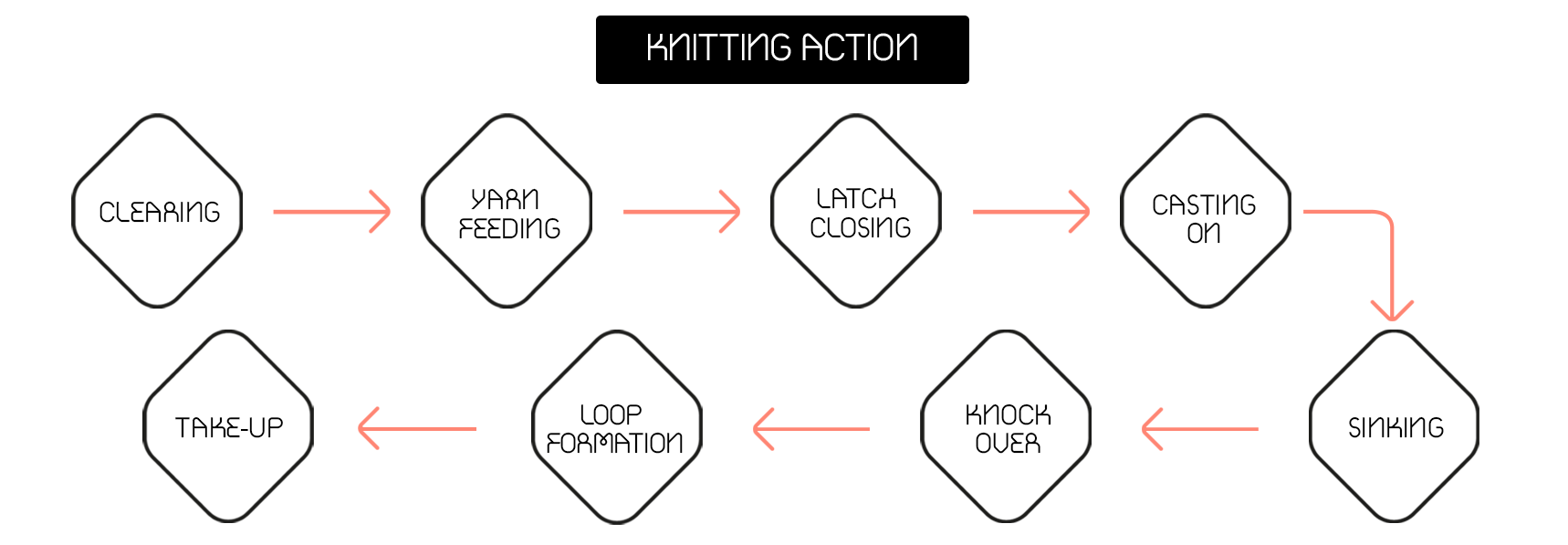
Cam Setup and Yarn Fingers
For the pattern set in iPolaris it is recommended to create basic know-how related to the most common cam set up, yarn finger positioning and macro levels. This will help when working on the pattern plane.
Cam Setup
Cams act directly on the needles or dial jacks butts. The cams are used to control the movement of the needles or dial jacks, and when the cams work, the needles and dial jacks move along their tracks. This is a sliding piece, generally used for timed motion.
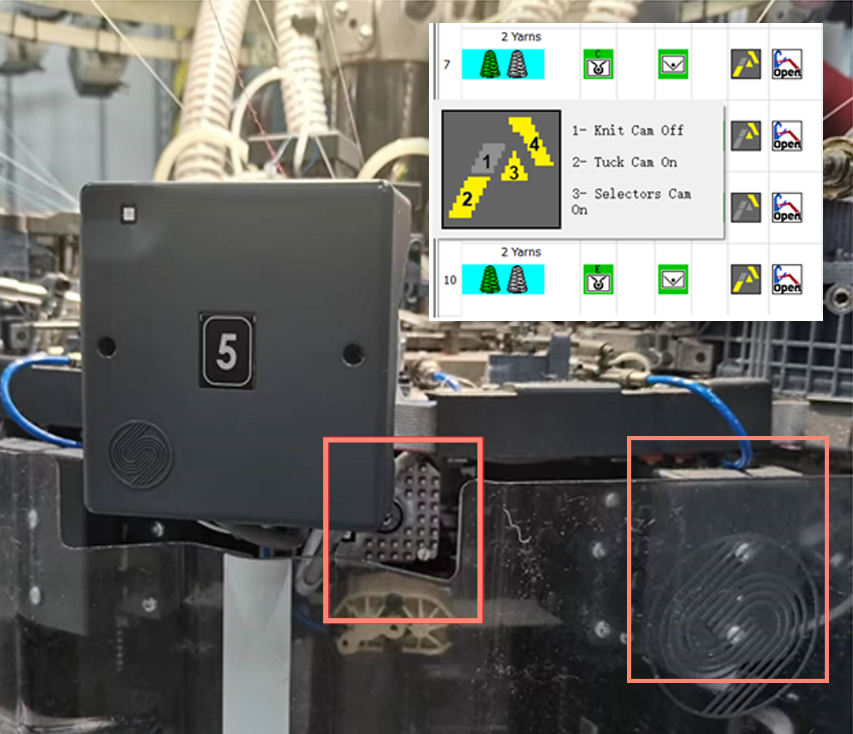
Yan Fingers
Yarn fingers are used to feed the yarns to the machine needles. The different positions of the fingers can facilitate the exit of the yarn from the needles, avoid the yarns to be discarded, they can also be brought closer to the needles to avoid other feeders, among other features.
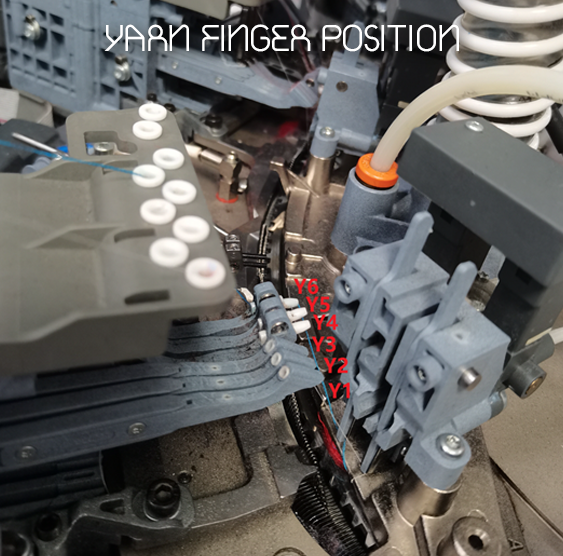
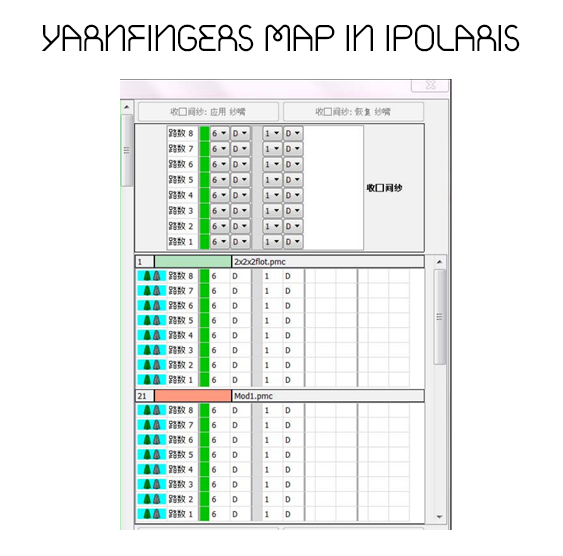
Summary
As you were able to see, the basic elements of the knitted structures and the machinery complement each other. Knowing about this basic concept and elements will allow you to know more about the way a knitted material is built, it will provide you with technical knowledge to better communicate with your team, and, it will allow you to explore and the possibilities and limits of the structures and machines.
If you are interested in learning more, we recommend to review or showcases on Yarns and Stitches to complement this knowledge.
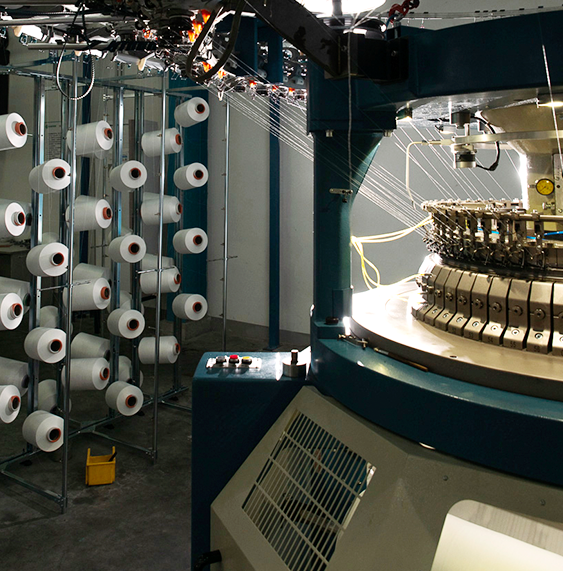
Glossary
Compound Needle: This is a needle used in warp and weft knitting. The hook of the needle closes by a tongue moving vertically to form a stitch, the needle must be closed to form it.
Latch Needle: This needle has a small hook and a latch that moves to close the hook.
Spring Bearded Needle: This needle has a long terminal hook that gets closed during casting off by a device known as a presser, after being pressed, the hook returns to its original position. This type of needle is commonly used in the production of fine fabrics.
Macro: Function used to insert and remove cams inside of a chain without programming reference degrees.

Request a personalized consultancy in seamless machinery
